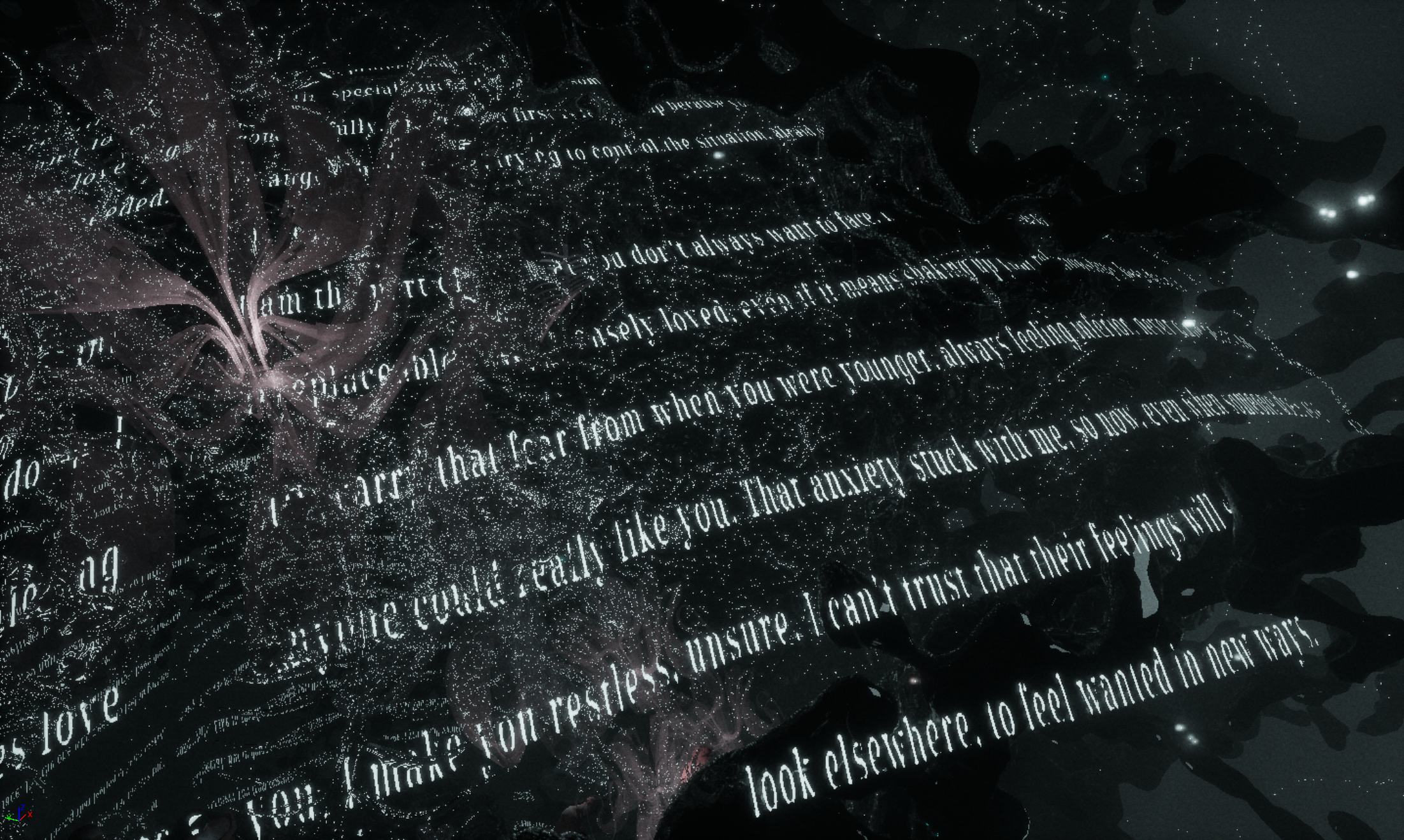
Rising River
A Personal Odyssey to Your Shadow | AI-driven Self-analysis VR experience | 2024
Rising River is an AI-driven VR therapy experience exploring how games and VR can make healing and self-analysis more engaging and accessible.
Players board a small boat and sail into a cave to find a giant fish embodying their shadow self. Using real-time voice input, they converse with the cave’s voice, and generative AI dynamically reshapes both dialogue and environment, guiding the journey deeper into their psyche and creating an interactive “mind cave” that mirrors their inner landscape.
Official Website - risingriverofficial.com
VR Experience Screenshot
Inspiration and Concept
The game integrates Jungian shadow theory and the VIA Character Strengths framework to create a novel approach to therapeutic self-analysis. It began with a fundamental question: Can gaming and virtual reality democratize the therapeutic benefits of Jungian shadow work, making them accessible to a broader audience?
At its core, Jung's theory of the shadow posits that within each person exists a subconscious aspect of the self that remains neglected, suppressed, and poorly understood. Traditional shadow work facilitates an encounter between an individual and their inner shadow. To translate this concept into an interactive experience, we designed a process of self-reflection to bring the shadow into view. This required careful exploration of players' fears, motivations, desires, and memories.
We realized that such exploration needed a foundation in a broader understanding of self-perception, both positive and negative. The VIA 24 Character Strengths framework provided a comprehensive taxonomy of character traits for players to assess as relative strengths or weaknesses. Our key insight was that the traits players identify as lesser strengths during gameplay could reveal areas of insecurity or overlooked aspects of the self.
To enhance this exploration, we leveraged generative AI to craft a personalized narrative journey in a virtual cave. The system dynamically generates content based on the player's responses, enabling a deeper engagement with their shadow self. With the director’s background in filmmaking, she view narrative as a powerful tool for organizing memories and psychological structures. Research shows that storytelling helps people find meaning, construct identity, and cope with trauma, making it a vital component of this interactive experience.
Through this embodied VR experience, participants are gently guided into self-exploration via a series of fixed and generative questions, leading them on a unique narrative journey. Players embark on a journey to revive a dried-up, dark river by offering words that reflect their innermost self. Through VR-based physical interactions, their responses become tangible elements within the world.
Technical Information
Platform: Unreal Engine 5
GPT API Integration: Generates dynamic questions and content using OpenAI's GPT, particularly for questions 5-7 and the shadow self revelation in the final scene outside the cave.
Prompt Engineering: Prompt design to help GPT understand player questions and frame responses in a coherent, meaningful direction.
Real-Time Speech-to-Text: Captures player responses and converts them into text for prompt processing.
Text-to-Speech: Converts GPT-generated responses into natural-sounding AI voices.
Credits
Creative Director: Lois He
Technical Consultant: Xuelong Mu
AI Integration: Vio Zhu
VR Development: Lois He, Ellen Chen
Visual Design: John Luo
Tech Art & Environment Development: John Luo, Lois He
UI Design: Lillian Sun, John Luo
Title Design & Animation: Xing Zhang, Jun Yang
Sound & Music Design: Kaiyang Zhao
Psychology-Guided Design: Andrew Trousdale
Special Thanks: Winslow Porter, Dan Tomasulo, Victor Morales, Jonathan Turner, Tianqi Yang, Todd Bryant, Chenyi Lee
Exhibition Highlights:
Official Selection – SIGGRAPH 2025 Immersive Pavilion, Vancouver, Canada
Official Selection – SXSW Sydney, XR + Showcase
The Art X Gallery Session at GEN-AI SUMMIT Silicon Valley 2024, sponsored by Microsoft, was held at the Palace of Fine Arts in San Francisco.
Artechouse, in New York, US. from January to April 2025. Screen-based Version,
LAMAMA Gallery Space, New York, May 2024 showcase.
The Holy Art Gallery, in Athens and London, June 2024.
CICA Museum, "Contemporary Landscape 2025", Korea, from January 8 to 26, 2025. Screen-based Version,





















